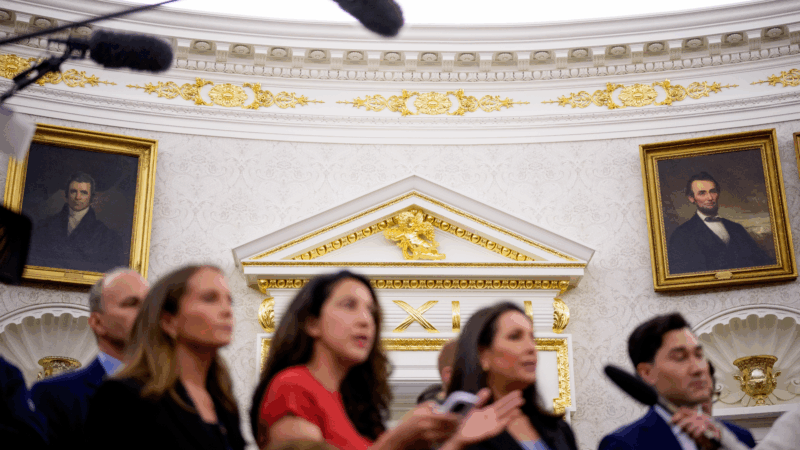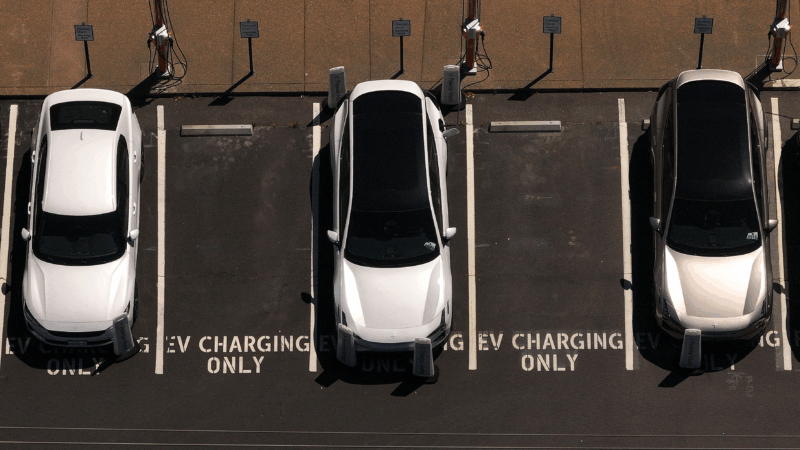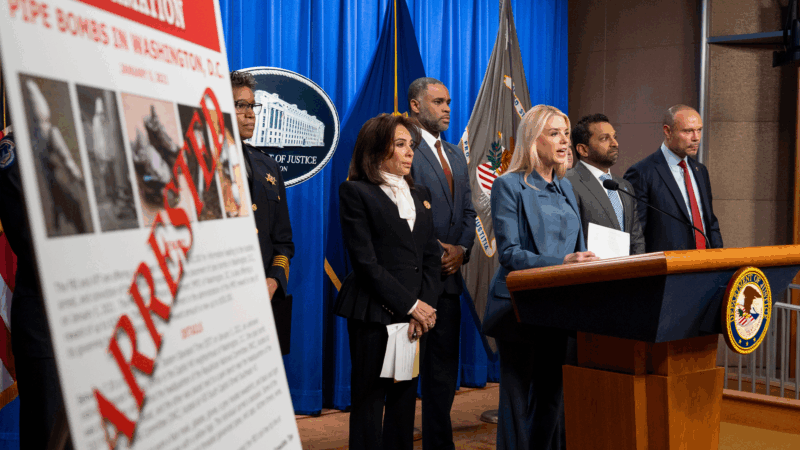In A Segregated County, A New Charter School Offers An Alternative
It’s the first week of class in a new school in Sumter County, Ala., and some fourth-graders are getting to know each other. They have pieces of colored paper they can do anything they want with — the idea is to be creative. Teacher Morri Mordecai cheers them on.
“They put theirs together and said it represented a rainbow,” she says, pointing to one group. “Is that not cool?”
A rainbow is a fitting symbol for University Charter School, where Mordecai works. Of its more than 300 students, only about half are black — and that’s big news in Sumter County, which sits about 120 miles southwest of Birmingham.
More than 60 years after Brown v. Board of Education, school integration remains a distant goal in many parts of the country. Enrollment in Sumter County public schools has been virtually 100 percent African-American, and University Charter School aims to change that. For most students, it’s the first time they’ll be learning next to someone of another race.
“We have such a diverse group,” Mordecai says, “and to see them all working together as one, and then talking about it, is just extraordinary. You can’t get experiences like that everywhere.”
After its 1954 Brown v. Board of Education ruling, the Supreme Court urged school districts to desegregate with “all deliberate speed.” But it took years for Alabama to actually desegregate. When it finally did, as in many parts of the country, whites living near blacks avoided integration by moving out of their school zones or starting new private schools.
Ashley Strickland grew up in Sumter. She’s white, and remembers traveling to another county for school. She says she probably would have done the same for her 4-year-old, but now she’s sending her daughter to pre-K at University Charter, a public school operated by the University of West Alabama.
“I’ve got friends with different race children, so she’s grown up that way,” Strickland says. “It doesn’t make a difference to her. It’s important for the kids to co-mingle.”
According to the U.S. Census Bureau, about a third of Sumter County residents live in poverty. And achievement in Sumter’s public schools has been consistently low — the system received a D on the last state report card.
“Sumter County, like so many rural counties in our state, suffers from a lack of highly effective teachers,” says Joyce Stallworth, a retired University of Alabama education professor.
She isn’t convinced a charter school will solve the county’s achievement and integration challenges. Meanwhile, the public schools are floundering.
“Could those resources be used in some kind of fashion to improve the existing public school to make it attractive to white kids and their parents? To black kids and their parents? To all kids and their parents,” she says.
In the first week of school, Morri Mordecai’s students worked on a project: Interview a classmate, then share what they learned with their teacher. One thing a lot of them had in common?
“They were going to miss some of their friends,” Mordecai says. “So the fact that they’re gaining new ones is so awesome.”
It’s by no means clear that this one school will solve Sumter County’s integration problems. But these fourth graders are making new friends — with children they might never have met otherwise.9(MDA2ODEyMDA3MDEyOTUxNTAzNTI4NWJlNw004))
Teens are having disturbing interactions with chatbots. Here’s how to lower the risks
Teen use of AI chat bots is growing, and psychologists worry it's affecting their social development and mental health. Here's what parents should know to help kids use the technology safely.
The Best Tiny Desk Concerts of 2025
Which Tiny Desk made an audio engineer question everything? Which one made a producer want to cry? Touch grass? Look back on the year in Tiny Desk, with the people who make them.
Why do so many people ring in the new year on Jan. 1?
Much of the world follows the Gregorian calendar, named after Pope Gregory XIII, who put the finishing touches on a Roman system that integrated ideas from other cultures.
A ‘very aesthetic person,’ President Trump says being a builder is his second job
President Trump was a builder before he took office, but he has continued it as a hobby in the White House.
Electric vehicles had a bumpy road in 2025 — and one pleasant surprise
A suite of pro-EV federal policies have been reversed. Well-known vehicles have been discontinued. Sales plummeted. But interest is holding steady.
Pipe bomb suspect told FBI he targeted U.S. political parties, memo says
The man accused of placing two pipe bombs in Washington on the eve of Jan. 6, 2021 told investigators someone needed to "speak up" for people who believed the 2020 election was stolen, prosecutors said Sunday.







